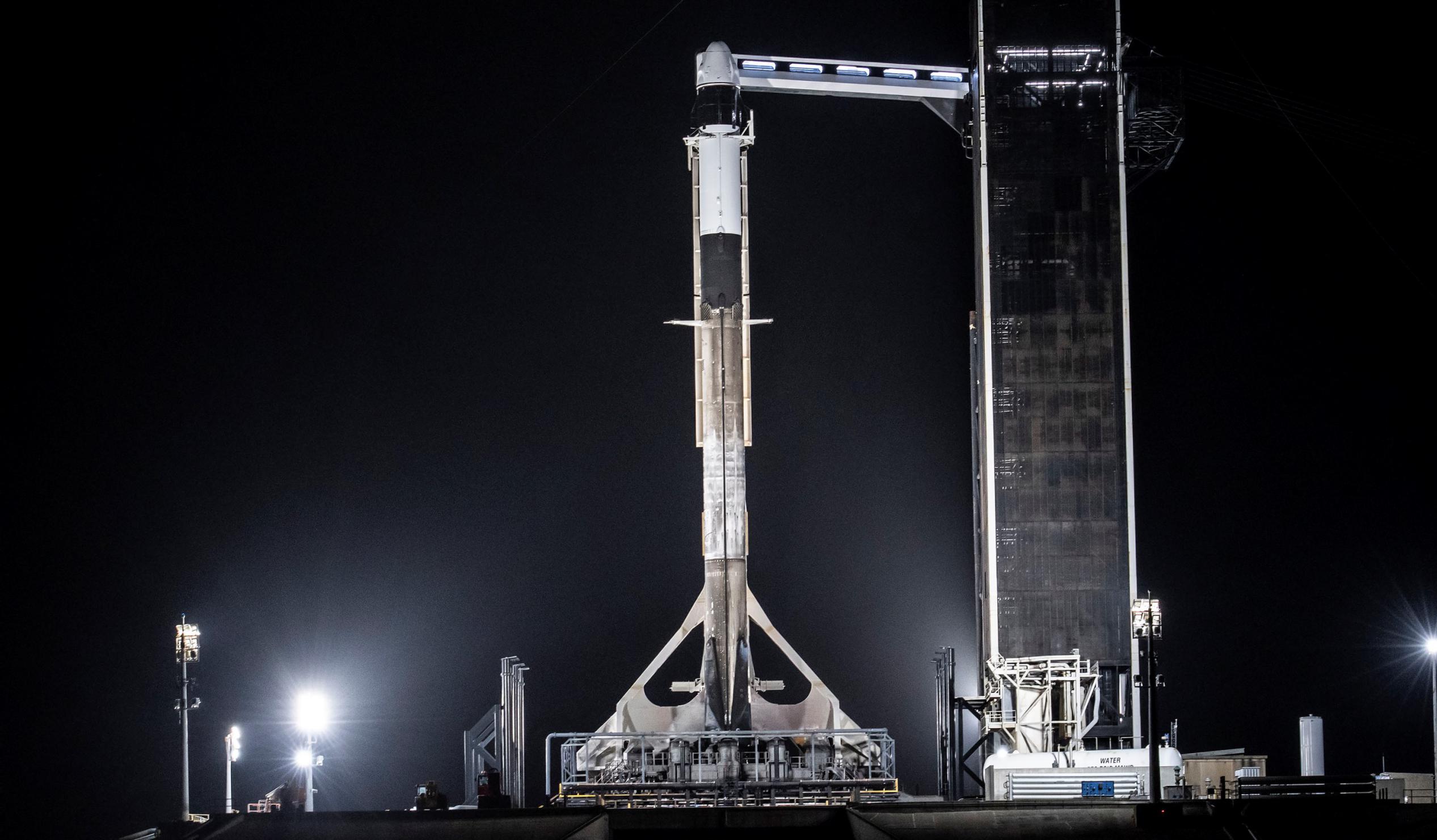
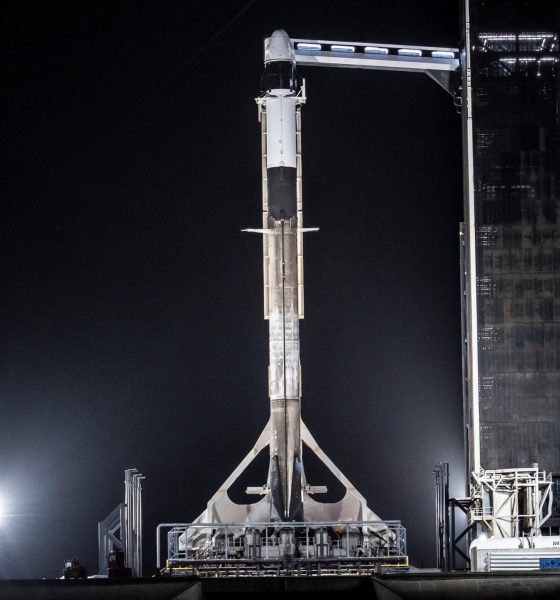
News
SpaceX set for first private astronaut launch to the International Space Station
Update: SpaceX has successfully fired up Falcon 9 booster B1062 and confirmed that Crew Dragon’s second private astronaut launch is on track to lift off at 11:17 am EDT (15:17 UTC) on Friday, April 8th. SpaceX’s live coverage will begin about three hours prior.
A flight-proven Falcon 9 rocket and Crew Dragon spacecraft have rolled out of SpaceX’s Kennedy Space Center (KSC) Pad 39A hangar and been raised vertical ahead of the company’s second private astronaut launch.
Known as Axiom-1 or Ax-1, the mission – managed by third-party provider Axiom Space – aims to be the first fully private crewed launch to the International Space Station (ISS). That means that Ax-1 will launch a crew of private astronauts from a privately-operated launch site with a privately-owned rocket and spacecraft, all with zero direct government impetus or funding. Of course, the situation is a bit more complex just beneath the surface.
The focus of Axiom-1’s crew is three ultrawealthy customers:
- Larry Connor: Ax-1’s pilot and an entrepreneur who accrued his wealth through real estate
- Eytan Stibbe: a venture capitalist and former fighter pilot who could become the second Israeli astronaut ever
- Mark Pathy: CEO of Canadian investment and shipping companies
Each paying $55 million for the ten-day journey and eight-day stay at the International Space Station (ISS), Connor, Stibbe, and Pathy are bankrolling the mission. Crew Dragon’s fourth Ax-1 passenger, however, is Michael López-Alegría, a retired four-time NASA astronaut turned private (space) pilot who now works for Axiom Space.
Launch Complex 39A was originally built and operated by NASA from the 1960s to 2011 before it was leased to SpaceX in 2014. The development of the first versions of SpaceX’s Falcon 9 rocket and Dragon spacecraft were heavily funded by NASA in the late 2000s. After SpaceX won a competitive $3.1 billion contract alongside Boeing, which received $4.8 billion to achieve the same goals, NASA has almost exclusively funded Crew Dragon’s development and is (for now) its main customer. Finally, alongside Russia’s space agency, NASA has invested tens of billions of dollars to build, launch, assemble, crew and maintain the International Space Station for around three decades.
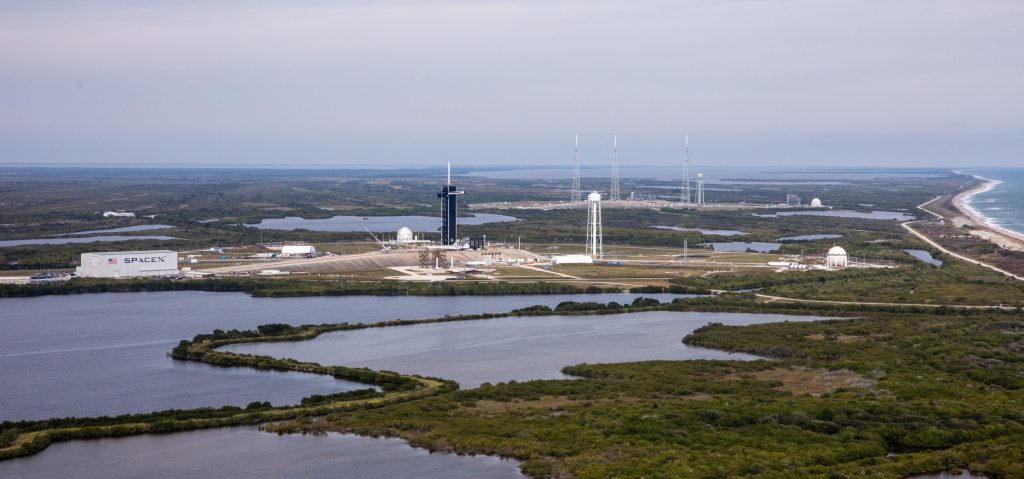
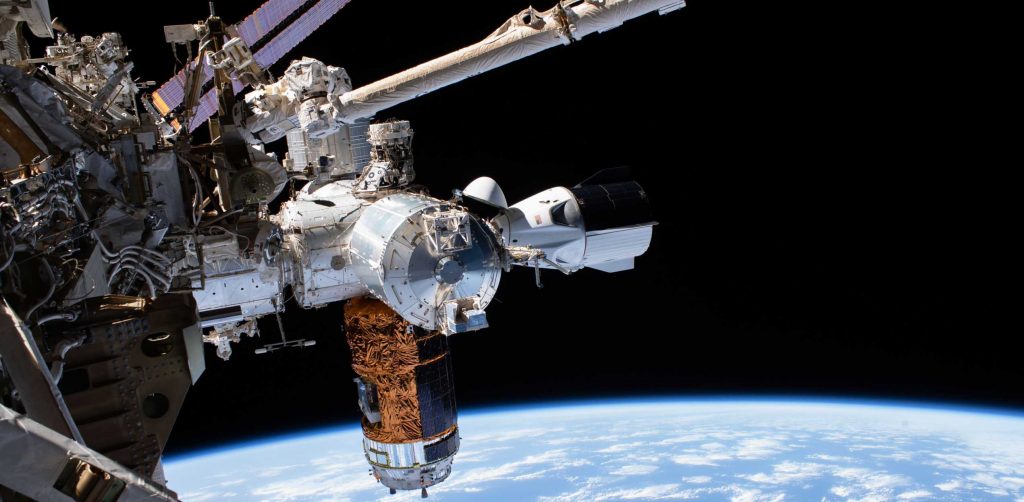
Calling Ax-1 “fully private” is thus more of a half-truth than the full reality. Nonetheless, the fact that SpaceX has significantly benefitted from NASA funding and resources – a vast majority of which it earned competitively – should not take away from SpaceX’s extraordinary merit and achievements. While NASA provided most of the resources, Falcon 9 and Crew Dragon are almost exclusively designed, built, and operated by SpaceX and SpaceX alone. SpaceX mainly provides services to NASA, which means that NASA is ultimately closer to a customer with refined taste and the final say than a second chef in the proverbial kitchen.
Axiom-1 demonstrates that well. Save for NASA benefitting from any data gathered from the mission and making relatively minor preparations for the private astronauts’ eight-day stay at the ISS, SpaceX will control and be responsible for almost every aspect of the launch.
Barring delays, Axiom-1 is scheduled to launch no earlier than (NET) 11:17 am EDT (15: 17 UTC) on Friday, April 8th. Prior to liftoff, the SpaceX and the Axiom crew must complete a “dry dress rehearsal” early on April 6th, replicating all the preparations needed for a launch up to the start of propellant loading. Later the same day, SpaceX intends to perform an integrated static fire test with Falcon 9 and Crew Dragon. If any issues arise during those tests, the launch date may be pushed back.
Crew Dragon is expected to finish docking with the ISS about 20 hours after liftoff, giving the Ax-1 crew a little over eight full days at the ISS before they’ll need to board Dragon and return to Earth. If the weather forecast for landing zones looks particularly bad or good leading up to undocking, SpaceX and NASA withhold the ability to expedite or delay the departure.

Elon Musk
Elon Musk’s warning to legacy automakers: Tesla FSD licensing snub echoes EV dismissal
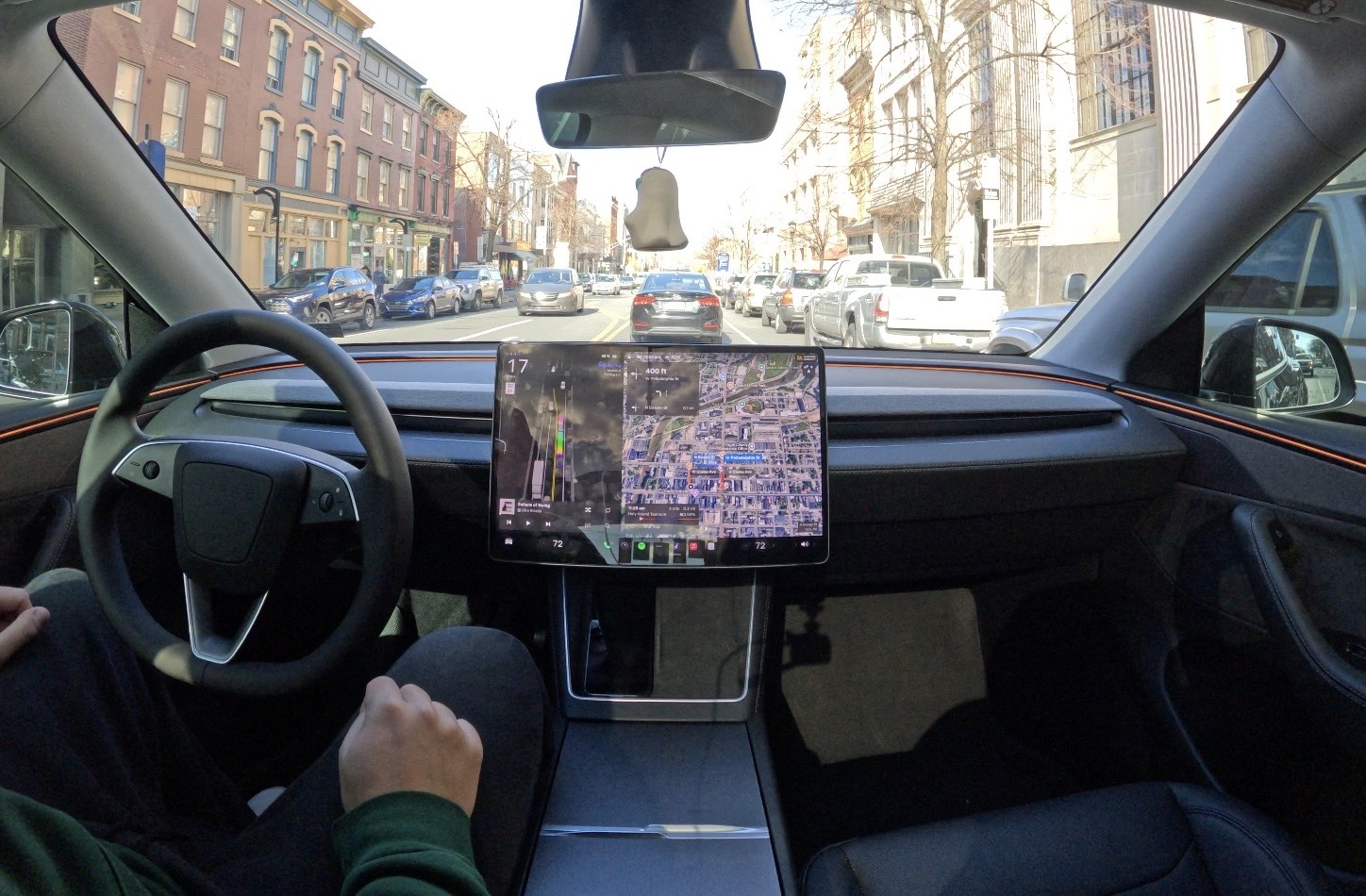
Elon Musk said in late November that he’s “tried to warn” legacy automakers and “even offered to license Tesla Full Self-Driving, but they don’t want it,” expressing frustration with companies that refuse to adopt the company’s suite, which will eventually be autonomous.
Tesla has long established itself as the leader in self-driving technology, especially in the United States. Although there are formidable competitors, Tesla’s FSD suite is the most robust and is not limited to certain areas or roadways. It operates anywhere and everywhere.
The company’s current position as the leader in self-driving tech is being ignored by legacy automakers, a parallel to what Tesla’s position was with EV development over a decade ago, which was also ignored by competitors.
The reluctance mirrors how legacy automakers initially dismissed EVs, only to scramble in catch-up mode years later–a pattern that highlights their historical underestimation of disruptive innovations from Tesla.
Elon Musk’s Self-Driving Licensing Attempts
Musk and Tesla have tried to push Full Self-Driving to other car companies, with no true suitors, despite ongoing conversations for years. Tesla’s FSD is aiming to become more robust through comprehensive data collection and a larger fleet, something the company has tried to establish through a subscription program, free trials, and other strategies.
Tesla CEO Elon Musk sends rivals dire warning about Full Self-Driving
However, competing companies have not wanted to license FSD for a handful of speculative reasons: competitive pride, regulatory concerns, high costs, or preference for in-house development.
Déjà vu All Over Again
Tesla tried to portray the importance of EVs long ago, as in the 2010s, executives from companies like Ford and GM downplayed the importance of sustainable powertrains as niche or unprofitable.
Musk once said in a 2014 interview that rivals woke up to electric powertrains when the Model S started to disrupt things and gained some market share. Things got really serious upon the launch of the Model 3 in 2017, as a mass-market vehicle was what Tesla was missing from its lineup.
This caused legacy companies to truly wake up; they were losing market share to Tesla’s new and exciting tech that offered less maintenance, a fresh take on passenger auto, and other advantages. They were late to the party, and although they have all launched vehicles of their own, they still lag in two major areas: sales and infrastructure, leaning on Tesla for the latter.
I’ve tried to warn them and even offered to license Tesla FSD, but they don’t want it! Crazy …
When legacy auto does occasionally reach out, they tepidly discuss implementing FSD for a tiny program in 5 years with unworkable requirements for Tesla, so pointless. 🤷♂️
🦕 🦕
— Elon Musk (@elonmusk) November 24, 2025
Musk’s past warnings have been plentiful. In 2017, he responded to critics who stated Tesla was chasing subsidies. He responded, “Few people know that we started Tesla when GM forcibly recalled all electric cars from customers in 2003 and then crushed them in a junkyard,” adding that “they would be doing nothing” on EVs without Tesla’s efforts.
Companies laughed off Tesla’s prowess with EVs, only to realize they had made a grave mistake later on.
It looks to be happening once again.
A Pattern of Underestimation
Both EVs and self-driving tech represent major paradigm shifts that legacy players view as threats to their established business models; it’s hard to change. However, these early push-aways from new tech only result in reactive strategies later on, usually resulting in what pains they are facing now.
Ford is scaling back its EV efforts, and GM’s projects are hurting. Although they both have in-house self-driving projects, they are falling well behind the progress of Tesla and even other competitors.
It is getting to a point where short-term risk will become a long-term setback, and they may have to rely on a company to pull them out of a tough situation later on, just as it did with Tesla and EV charging infrastructure.
Tesla has continued to innovate, while legacy automakers have lagged behind, and it has cost them dearly.
Implications and Future Outlook
Moving forward, Tesla’s progress will continue to accelerate, while a dismissive attitude by other companies will continue to penalize them, especially as time goes on. Falling further behind in self-driving could eventually lead to market share erosion, as autonomy could be a crucial part of vehicle marketing within the next few years.
Eventually, companies could be forced into joint partnerships as economic pressures mount. Some companies did this with EVs, but it has not resulted in very much.
Self-driving efforts are not only a strength for companies themselves, but they also contribute to other things, like affordability and safety.
Tesla has exhibited data that specifically shows its self-driving tech is safer than human drivers, most recently by a considerable margin. This would help with eliminating accidents and making roads safer.
Tesla’s new Safety Report shows Autopilot is nine times safer than humans
Additionally, competition in the market is a good thing, as it drives costs down and helps innovation continue on an upward trend.
Conclusion
The parallels are unmistakable: a decade ago, legacy automakers laughed off electric vehicles as toys for tree-huggers, crushed their own EV programs, and bet everything on the internal-combustion status quo–only to watch Tesla redefine the industry while they scrambled for billions in catch-up capital.
Today, the same companies are turning down repeated offers to license Tesla’s Full Self-Driving technology, insisting they can build better autonomy in-house, even as their own programs stumble through recalls, layoffs, and missed milestones. History is not merely rhyming; it is repeating almost note-for-note.
Elon Musk has spent twenty years warning that the auto industry’s bureaucratic inertia and short-term thinking will leave it stranded on the wrong side of technological revolutions. The question is no longer whether Tesla is ahead–it is whether the giants of Detroit, Stuttgart, and Toyota will finally listen before the next wave leaves them watching another leader pull away in the rear-view mirror.
This time, the stakes are not just market share; they are the very definition of what a car will be in the decades ahead.
News
Waymo driverless taxi drives directly into active LAPD standoff
No injuries occurred, and the passengers inside the vehicle were safely transported to their destination, as per a Waymo representative.
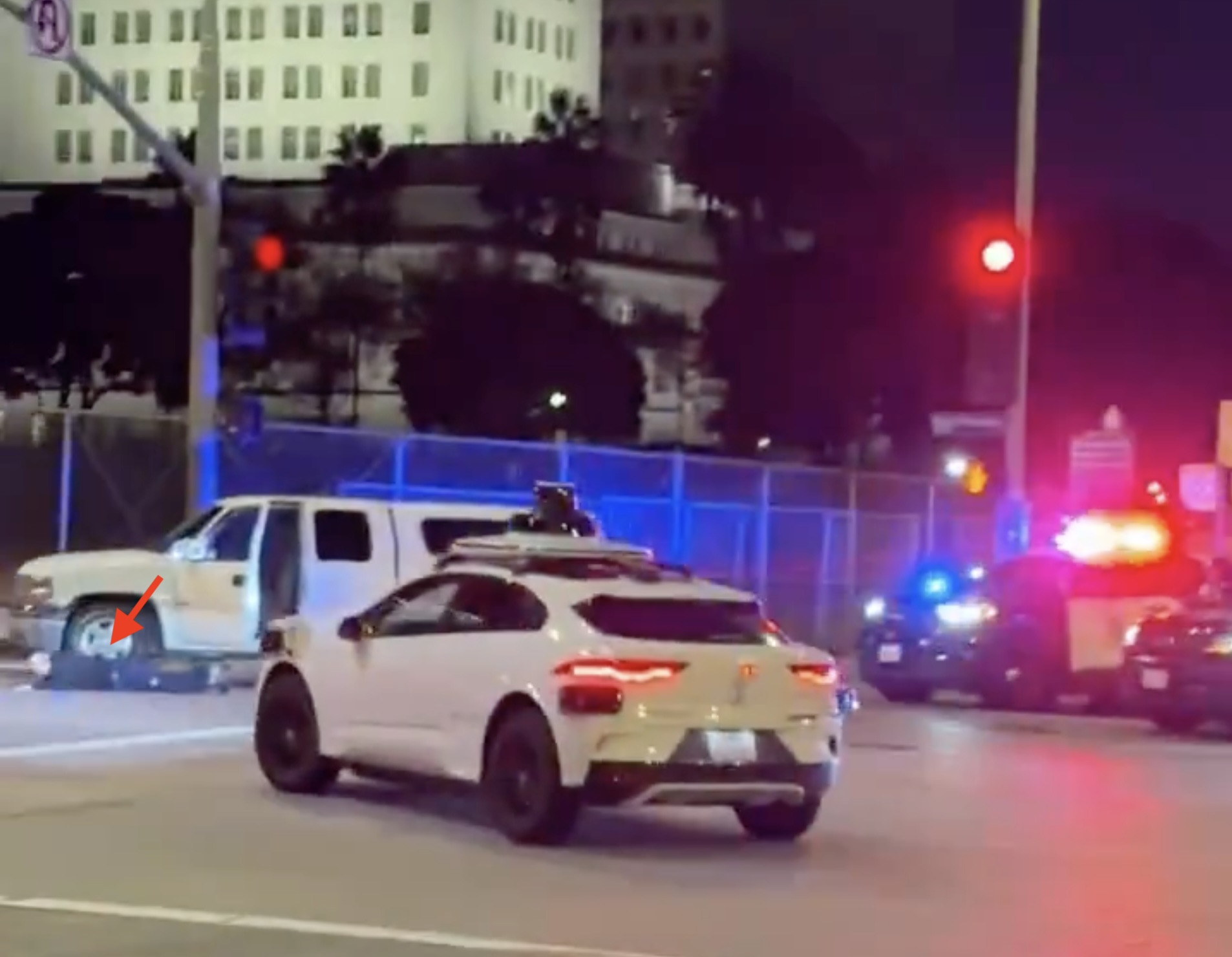
A video posted on social media has shown an occupied Waymo driverless taxi driving directly into the middle of an active LAPD standoff in downtown Los Angeles.
As could be seen in the short video, which was initially posted on Instagram by user Alex Choi, a Waymo driverless taxi drove directly into the middle of an active LAPD standoff in downtown Los Angeles.
The driverless taxi made an unprotected left turn despite what appeared to be a red light, briefly entering a police perimeter. At the time, officers seemed to be giving commands to a prone suspect on the ground, who looked quite surprised at the sudden presence of the driverless vehicle.
People on the sidewalk, including the person who was filming the video, could be heard chuckling at the Waymo’s strange behavior.
The Waymo reportedly cleared the area within seconds. No injuries occurred, and the passengers inside the vehicle were safely transported to their destination, as per a Waymo representative. Still, the video spread across social media, with numerous netizens poking fun at the gaffe.
Others also pointed out that such a gaffe would have resulted in widespread controversy had the vehicle involved been a Tesla on FSD. Tesla is constantly under scrutiny, with TSLA shorts and similar groups actively trying to put down the company’s FSD program.
A Tesla on FSD or Robotaxi accidentally driving into an active police standoff would likely cause lawsuits, nonstop media coverage, and calls for a worldwide ban, at the least.
This was one of the reasons why even minor traffic infractions committed by the company’s Robotaxis during their initial rollout in Austin received nationwide media attention. This particular Waymo incident, however, will likely not receive as much coverage.
News
Tesla Model Y demand in China is through the roof, new delivery dates show

Tesla Model Y demand in China is through the roof, and new delivery dates show the company has already sold out its allocation of the all-electric crossover for 2025.
The Model Y has been the most popular vehicle in the world in both of the last two years, outpacing incredibly popular vehicles like the Toyota RAV 4. In China, the EV market is substantially more saturated, with more competitors than in any other market.
However, Tesla has been kind to the Chinese market, as it has launched trim levels for the Model Y in the country that are not available anywhere else. Demand has been strong for the Model Y in China; it ranks in the top 5 of all EVs in the country, trailing the BYD Seagull, Wuling Hongguang Mini EV, and the Geely Galaxy Xingyuan.
The other three models ahead of the Model Y are priced substantially lower.
Tesla is still dealing with strong demand for the Model Y, and the company is now pushing delivery dates to early 2026, meaning the vehicle is sold out for the year:
NEWS: New orders for all four Tesla Model Y trims in China are now officially sold out for 2025, as the factory’s remaining production capacity for the year has been fully allocated.
Estimated delivery dates for new orders now show January-February 2026. pic.twitter.com/Dfnu7yY58N
— Sawyer Merritt (@SawyerMerritt) December 1, 2025
Tesla experienced a 9.9 percent year-over-year rise in its China-made EV sales for November, meaning there is some serious potential for the automaker moving into next year despite increased competition.
There have been a lot of questions surrounding how Tesla would perform globally with more competition, but it seems to have a good grasp of various markets because of its vehicles, its charging infrastructure, and its Full Self-Driving (FSD) suite, which has been expanding to more countries as of late.
Tesla Model Y is still China’s best-selling premium EV through October
Tesla holds a dominating lead in the United States with EV registrations, and performs incredibly well in several European countries.
With demand in China looking strong, it will be interesting to see how the company ends the year in terms of global deliveries.









